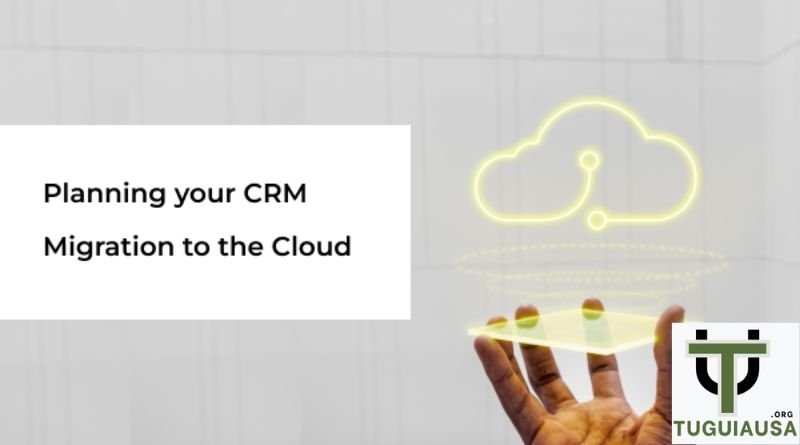Customer Relationship Management (CRM) systems play a crucial role in enhancing business operations by fostering strong customer relationships, improving sales, and streamlining workflows. However, as businesses evolve, so do their technological needs. One of the significant transitions in this digital age is the move from on-premise CRM systems to cloud-based platforms. CRM migration to the cloud offers businesses an array of benefits, including improved scalability, flexibility, security, and cost-efficiency. However, the process of migration is complex and requires careful planning, strategy, and execution to ensure a smooth transition. This article explores the key steps and best strategies for successful CRM migration to the cloud.
Understanding CRM Migration to the Cloud
CRM migration to the cloud refers to the process of transferring customer data, workflows, and applications from an on-premise CRM system to a cloud-based CRM platform. Cloud-based CRM systems are hosted and maintained by service providers, offering organizations easier access to their data and applications from any location, at any time. This shift is not only about moving data but also about adopting a more flexible and modern approach to managing customer relationships.
While migrating to the cloud offers a host of benefits, such as lower upfront costs, enhanced data security, and automatic updates, it requires a strategic approach to ensure minimal disruption and maximum benefit. Let’s delve into the key steps and strategies that can guide businesses through this critical transformation.
Key Steps in CRM Migration to the Cloud
Successful CRM migration requires careful planning and execution. Here are the critical steps involved in ensuring a smooth transition:
1. Assess Your Current CRM System
The first step in any migration process is understanding your current CRM system. It’s essential to conduct a comprehensive review of your existing CRM to identify what works well and what doesn’t. This involves analyzing your CRM’s features, workflows, integrations, and user experience. Ask yourself:
- Which features do you use the most, and which are underutilized?
- Are there any integrations that are critical to your daily operations?
- What data needs to be migrated, and what can be left behind?
Understanding these aspects will help you determine which cloud CRM solution fits your needs and will make the migration process more efficient.
2. Define Your Business Requirements
Before moving forward, you must outline the specific business goals and objectives you hope to achieve with the cloud CRM. This includes understanding your organization’s needs for scalability, user accessibility, automation, reporting, and integration with other software tools. Some of the critical factors to consider are:
- The number of users who will need access to the CRM
- The type of customer data and documents you need to store
- The level of customization you require for workflows and reports
Clearly defining your goals ensures that the new CRM solution aligns with your business strategy and helps avoid unnecessary costs during migration.
3. Choose the Right Cloud CRM Solution
The cloud CRM market is filled with a variety of solutions tailored to different business needs. Whether you choose Salesforce, Microsoft Dynamics, HubSpot, or another CRM platform, it’s essential to select a solution that meets your business requirements. When evaluating potential CRM systems, consider:
- Ease of use and interface
- Cost of ownership and subscription pricing
- Customization capabilities
- Integration with third-party tools (email marketing platforms, analytics tools, etc.)
- Support and training options
Choosing the right solution upfront is crucial for the long-term success of your cloud CRM. Take the time to compare different platforms, read customer reviews, and even conduct pilot tests to ensure the system meets your requirements.
4. Plan Data Migration and Integration
Migrating data is one of the most critical aspects of CRM migration. Your customer data, sales history, communication logs, and other important records need to be transferred accurately and securely. It’s essential to have a well-defined plan in place that includes:
- Mapping your data: Identify how the data in your current CRM system will map to the new cloud system. Ensure that data fields are compatible and can be easily transferred.
- Cleaning your data: Before migrating, it’s a good idea to clean up your data. Remove duplicates, outdated entries, and irrelevant records to ensure you’re only transferring high-quality data.
- Integration: Consider how the new CRM will integrate with other tools you currently use, such as marketing automation platforms, email systems, or ERP systems.
Ensure that you use the right data migration tools and that you perform thorough testing to validate data integrity after migration.
5. Test and Validate the New System
Once the migration is complete, it’s essential to test the new CRM system to ensure it functions as expected. This includes testing user access, workflows, data accuracy, and integrations. Some critical tests to run include:
- User acceptance testing (UAT): Ensure that end-users can access the system, use the features effectively, and have a positive experience.
- Data accuracy testing: Check that all migrated data is correctly formatted and accessible within the new system.
- Performance testing: Make sure the system operates efficiently and that it can handle your organization’s workflow volume.
Performing these tests will help identify any issues early on, ensuring a smoother transition and less disruption to your business operations.
6. Train Employees and Provide Support
Successful CRM migration is not just about the technology; it’s about ensuring your team can use it effectively. Therefore, training is essential. Offer comprehensive training programs for your employees to ensure they are comfortable with the new system. This includes:
- Detailed walkthroughs of the new features and interface
- Training on best practices for data entry, reporting, and collaboration
- Ongoing support to address any issues after the migration
Equipping your team with the necessary tools and knowledge will increase adoption and minimize resistance to the new system.
7. Monitor and Optimize the System
After the migration is complete, it’s important to continuously monitor and optimize your CRM system. Regularly check system performance, gather feedback from users, and analyze data to ensure the platform is meeting your business goals. Over time, you may need to make adjustments to workflows, integrations, or user permissions to improve efficiency.
Best Strategies for CRM Migration to the Cloud
Now that we’ve covered the key steps, let’s explore the best strategies that can help you achieve a successful CRM migration.
1. Start with a Clear Migration Plan
A well-documented migration plan serves as a roadmap for your transition. This plan should outline the migration timeline, roles and responsibilities, risk management strategies, and milestones. A clear plan ensures everyone is on the same page and helps reduce delays and unforeseen issues.
2. Minimize Downtime and Disruptions
Migration should ideally be completed during off-peak hours or in phases to minimize business disruptions. Consider performing a phased migration, where you transfer smaller parts of the system over time, rather than moving everything at once. This approach helps reduce the risk of operational downtime and allows your team to adapt to the new system gradually.
3. Involve Stakeholders Early
Involve key stakeholders, including business leaders, IT teams, and end-users, in the planning and decision-making process. Their input can provide valuable insights into the requirements and challenges of the migration process, helping you select the best CRM system and ensuring a smoother transition.
4. Choose a CRM Vendor with Experience
Partnering with a cloud CRM provider that has a strong track record of successful migrations can be a game-changer. Experienced vendors offer resources, tools, and support to help you through the entire migration process. They can also provide advice on best practices and assist with post-migration optimization.
5. Maintain a Customer-Centric Focus
While the migration process may focus on technical considerations, never lose sight of the customer. The goal of CRM is to enhance customer relationships and improve service. Therefore, ensure that the migration does not negatively impact customer interactions. Keep communication open with customers if necessary, and ensure that the transition does not interrupt service delivery.
Conclusion
CRM migration to the cloud is an essential step for businesses looking to embrace modern technologies, enhance flexibility, and improve customer relationship management. However, the success of this transition hinges on careful planning, strategic execution, and ongoing support. By following the outlined steps and best strategies, organizations can successfully migrate to the cloud, realizing the full benefits of a more scalable, secure, and cost-effective CRM system.
As businesses continue to grow and evolve, CRM migration to the cloud offers a significant opportunity to drive innovation and improve operational efficiency. With the right approach, your business can leverage the power of cloud CRM to stay ahead of the competition and better serve your customers.
may Also Read: tuguiausa







